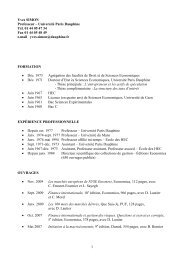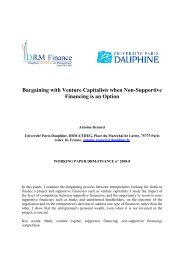Corporate governance and earnings management ... - CEREG
Corporate governance and earnings management ... - CEREG
Corporate governance and earnings management ... - CEREG
Create successful ePaper yourself
Turn your PDF publications into a flip-book with our unique Google optimized e-Paper software.
p. 24) tells us that “accounting literature on goodwill appeared in both Great Britain <strong>and</strong> the<br />
United States at about the time the profession was beginning to be formed … <strong>and</strong> papers read<br />
at meetings of these societies were printed for the members <strong>and</strong> published in periodicals or<br />
newspapers, such as The Accountant started in 1874”.<br />
Nobes <strong>and</strong> Norton (1996, p. 180) note that there are three types of goodwill: (a) internally<br />
generated goodwill, (b) goodwill purchased when buying assets other than by buying the<br />
shares in a company (non consolidation goodwill), <strong>and</strong> (c) goodwill purchased by a group<br />
when buying shares in a company (consolidation goodwill). This paper concentrates on the<br />
last two types, which we refer to as “acquired goodwill” (individually or in a business<br />
combination). Internally generated goodwill is not covered, as it involves specific issues in<br />
addition to those relating to acquired goodwill (see Jennings & Thompson, 1996).<br />
Many articles observe a wide diversity in both regulations <strong>and</strong> treatments applied in<br />
practice to goodwill (Catlett & Olson, 1968; Hughes, 1982; Arnold et al., 1994). In the United<br />
States, Walker (1938a) provides tables showing prevailing practices in the treatment of<br />
goodwill in the balance sheet. The tables illustrate that there is “little uniformity as to the<br />
position of goodwill”. In the United Kingdom, Holgate (1990, p. 9) considers that “the history<br />
of how goodwill has been accounted for … is a classic case study of the difficulties that<br />
st<strong>and</strong>ard-setters – <strong>and</strong> legislators – face in the light of varied practice, vested interests <strong>and</strong> an<br />
inadequately developed theoretical framework of accounting”.<br />
It is always difficult to divide accounting regulation into clearly dated phases. For this<br />
study, we decided to take a time when fundamental change took place as the start of a phase.<br />
That time is mainly determined by the change in accounting regulation (the issuance of a new<br />
st<strong>and</strong>ard or of an exposure draft that would later lead to the final st<strong>and</strong>ard). However, for the<br />
early stages (the end of the 19 th century <strong>and</strong> the beginning of the 20 th century) when the<br />
formal accounting regulation on goodwill was still absent, we rely on discussion papers<br />
written by leading scholar of the period to determine the phases.<br />
4



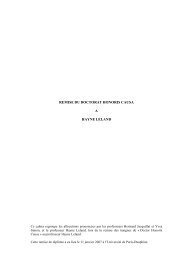

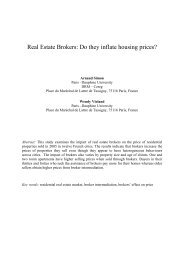
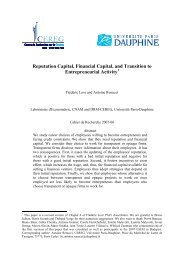

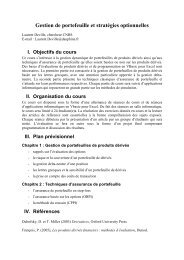


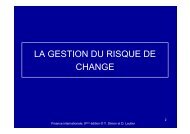
![& 6 ] ^ F ]^ - CEREG - Université Paris-Dauphine](https://img.yumpu.com/33326502/1/184x260/-6-f-cereg-universitac-paris-dauphine.jpg?quality=85)

